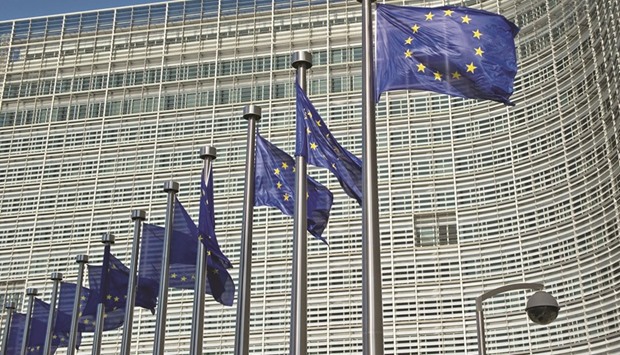Financial firms that buy and sell bonds and derivatives say the “more cautious approach” to market transparency recently adopted by European Union regulators will improve rules planned as part of the MiFID II overhaul, though the whole enterprise may still be in vain.
The European Securities and Markets Authority proposed this month to phase in standards on bond liquidity and trade size that will determine whether securities fall under the new rules for disclosing pre- and post-trade bid and offer prices. The European Commission, the EU’s executive arm, had instructed ESMA to soften a previous draft of MiFID II technical standards to avoid impeding markets.
By gradually tightening the rules over a four-year period, “significantly fewer instruments than initially proposed would be subject to the real-time transparency regime at the start of MiFID II,” according to ESMA. Banks and asset managers said phasing in the requirements makes sense.
“Sourcing liquidity in the corporate bond market can be challenging,” said Stephen Fisher, a managing director at BlackRock Inc in London. “It’s very much a creep and go approach on ESMA’s part, and that’s the right way to do it.”
As part of its efforts to prevent another financial crisis, the EU is implementing rules designed to shift trading on to exchanges where regulators can track it, boost transparency to protect individual investors and level the playing field for professionals. In fixed income, EU law goes farther than the US’s Trace bond-price reporting system, where trades are reported only after they have taken place.
The commission is considering whether to endorse ESMA’s proposals and send the technical standards on to the European Parliament and EU member states, which have three to six months to object to the rules, according to a spokeswoman. When the dust settles and the final rules are on the books, however, it may well emerge that the bond market simply isn’t suitable for such transparency, said Jason Waight, head of regulatory affairs at MarketAxess Europe, which competes with Bloomberg in running a trading platform and is a data provider.
“The industry will have to build these reporting systems,” he said. “There’s a real chance at the end of the first year the regulators conclude that the corporate bond market doesn’t have the liquidity to support transparency.”
As it prepares for the implementation of MiFID II, a vast law that affects nearly every financial firm operating in the EU, the commission is also studying the issue of liquidity in corporate bond markets.
“When it comes to new measures, we’ll be careful to avoid anything that could make the situation more difficult,” Jonathan Hill, the EU’s financial-services commissioner, said last month. This concern was evident in the commission’s request for ESMA to rework key transparency provisions in its proposed regulatory technical standards, the nuts and bolts needed to make MiFID II work.
The commission “considers necessary to take a more cautious approach to the calibration of the regime in the initial years, gradually building towards ESMA’s proposed calibrations once the data reporting system is effectively up and running and the effects of that regime can be properly assessed,” Olivier Guersent, the commission’s director general for financial services, wrote in a letter to ESMA chief Steven Maijoor.
Guersent focused on two issues: how to define a liquid market, and how to determine the waiver threshold for securities.
First, the commission objected to ESMA’s proposed standard of two trades a day for determining whether an instrument is liquid and subject to the transparency rules. Guersent called for an initial threshold of 15, falling to two in year four, a level that would cover about 2,600 bonds. ESMA adopted the phase-in principle. Assuming MiFID II enters into application on January 3, 2018, as proposed by the commission, the 15-trade level would apply until May 15, 2019. That would fall to 10 and then seven over the next two years, and the two-trade threshold would apply from May 16, 2021.
As a result of the phased-in trade threshold, ESMA doubled the issuance thresholds for determining if newly issued corporate and covered bonds have a liquid market to €1bn ($1.1bn) for the first two years before reverting to €500mn.
“It’s a very, very cautious way of approaching it,” Waight said. “At 15 trades per day, very, very few corporate bonds will be deemed liquid. There will be virtually no bond market pre- trade transparency in years one and two.”
Second, the commission told ESMA to phase in the threshold for waivers from the requirements that dealers publish firm quotes to all clients, an exception that can be granted if complying “would expose liquidity providers to undue risk.” The waiver is based on the size of a bond, a measurement known as “size specific to the instrument,” or SSTI.
In an illiquid market, such pre-trade transparency could leave dealers stuck with positions they aren’t able to hedge or reduce, losing money as others take advantage of their predicament.
During the phase-in period, the number of bonds affected gradually increases. From the MiFID II start date until May 31, 2019, ESMA set a level below which lie 30% of transactions, thus capturing only the smallest deals. This number rises to 40 and then 50 in the next two years, reaching 60% on June 1, 2021.
ESMA broke with the commission on what triggers the move from one level to the next. The commission made toughening the rules contingent on a “favorable liquidity assessment” by ESMA.
The regulator countered with an automatic progression through the stages, with an annual liquidity test that could lead to amending the rules “in case of significantly negative impacts on liquidity.”
The Association for Financial Markets in Europe, whose members include HSBC Holdings and Deutsche Bank, is “broadly supportive” of the commission’s phased approach, said Victoria Webster, a director in AFME’s credit division.

EU flags fly outside the European Commission headquarters building in Brussels. Financial firms that buy and sell bonds and derivatives say the u201cmore cautious approachu201d to market transparency recently adopted by European Union regulators will improve rules planned as part of the MiFID II overhaul, though the whole enterprise may still be in vain.


